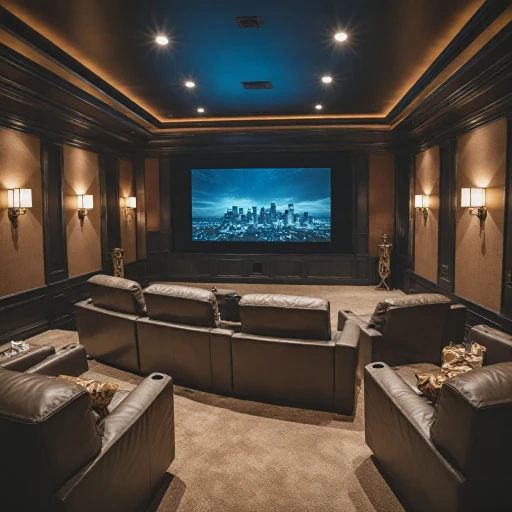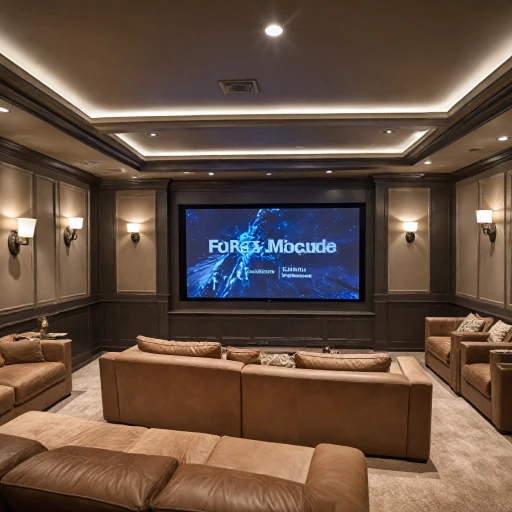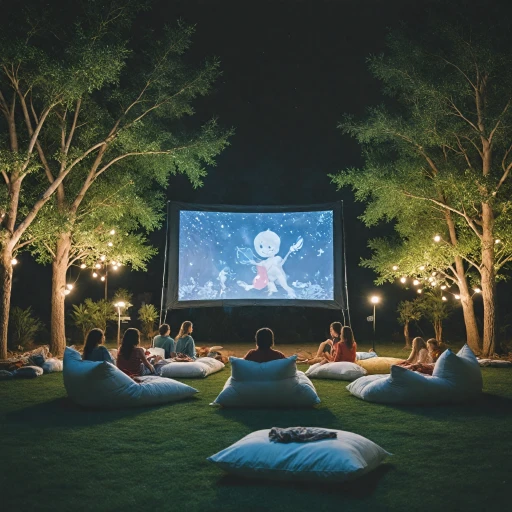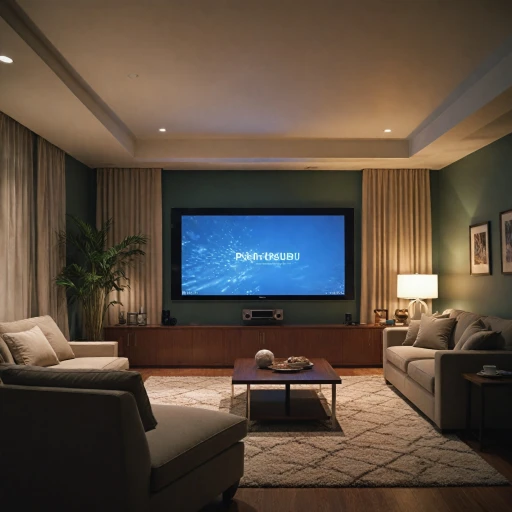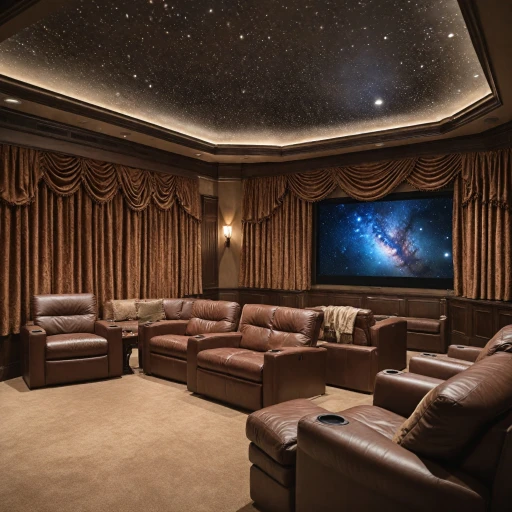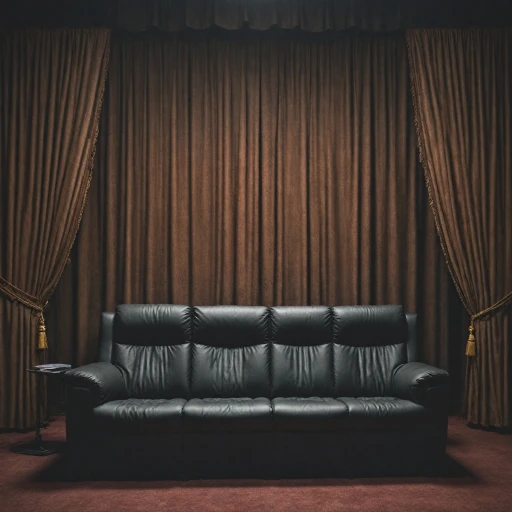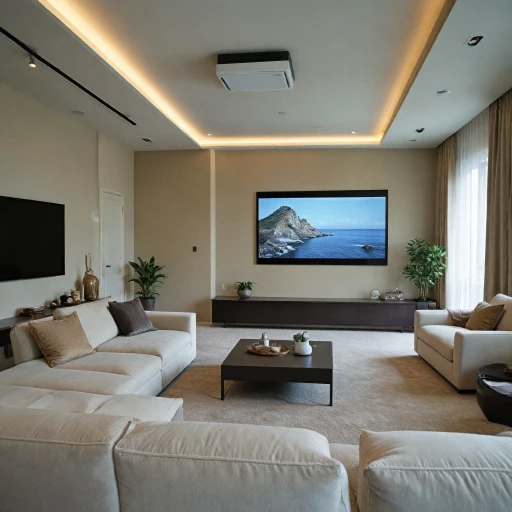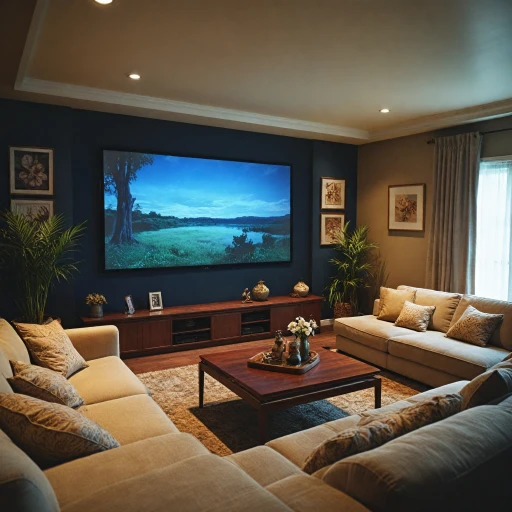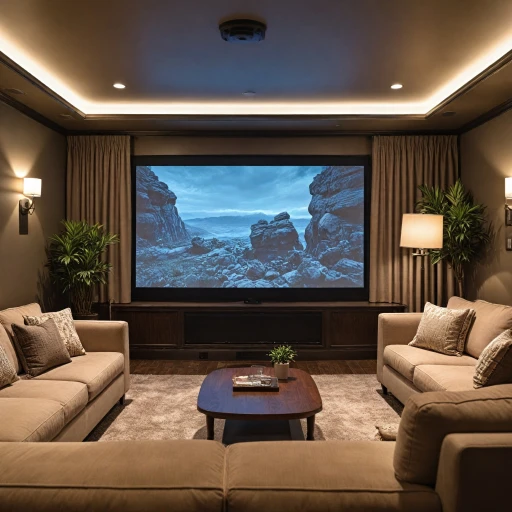Understanding 4K Projection
The Basics of 4K Projection
Understanding the benefits of 4K projection is crucial when setting up a home theater. A 4K projector provides a resolution of 3840 x 2160 pixels, which translates to a higher pixel density and reveals more intricate details of the content being viewed. This enhanced resolution leads to a more immersive experience, especially when viewed on appropriate screens. 4K projectors come in various designs, including throw and short throw models, each with different installation requirements. It's important to match your projector with the right type of screen, like either a fixed frame or portable unit, to amplify the impact of the 4K content. When considering a 4K projector, it's also essential to account for environmental factors such as ambient light. Some projectors, like the elite series, are better equipped at handling light-infused settings compared to others. This highlights the need to consider various screen materials that impact viewing quality, such as those offered by Stewart Filmscreen or Silver Ticket. Choosing the best projector requires more than just focusing on its price or brand; it necessitates understanding how 4K enhances the image quality. Frames and light control are pivotal here, just as much as considering the projector screen and its material specifications to achieve optimal viewing angles. For more insight into this technology, delve into our in-depth discussion on choosing the right cinema screen fabric for your home theater. By comprehending the core elements of 4K projection, making informed decisions regarding your home theater setup becomes significantly easier.Types of Screens for 4K Projectors
Exploring Various Screen Options
When selecting the perfect screen for your 4K projector, considering the different types available is crucial. Each type serves unique purposes and offers varying levels of quality and aesthetics. Here’s an overview of some great screen options you might consider:- Fixed Frame Screens: Ideal for dedicated home theaters, these screens are tensioned to ensure a wrinkle-free image. Brands like Elite Screens and Silver Ticket offer sturdy frames that can support high-quality projection.
- Portable Screens: Perfect for those who wish to have flexibility in their setup. Although portable screens can be convenient, they might not always offer the rigidity required for a pristine image.
- Manual Series Screens: If you're budget-constrained, manual pull-down screens could be a choice. They offer decent quality but may not match the fixed frame screens for image sharpness.
- Ambient Light Rejecting (ALR) Screens: Designed to enhance image quality in rooms with ambient light, making them an excellent option for non-dedicated spaces. They tend to come at a higher price point but significantly improve image visibility in well-lit environments.
- Ultra Short Throw Screens: Specifically designed for use with ultra short throw projectors, these screens can provide large images even in small rooms. They offer a modern, sleek look perfect for settings where space is at a premium.
Screen Material and Gain
The Impact of Screen Material on Projection Quality
When setting up a home theater, choosing the right screen material can make a significant difference in your viewing experience. The material of your projector screen affects image quality, brightness, and color accuracy, all of which are crucial for an immersive 4K projection experience. Let's explore the options available and factors to consider.
- Gain: The term 'gain' refers to the screen's ability to reflect light. A higher gain number means more light is reflected, making the image brighter. Screens with a gain of 1.0 are considered neutral, while those with a higher gain can enhance brightness, which is useful in environments with ambient light.
- Types of Screen Material: Popular materials for projector screens include matte white, which is versatile and offers good color reproduction, and silver lenticular, ideal for enhancing contrast and brightness. Some premium options like Stewart Filmscreen may be pricier but offer top-notch quality.
- Impact on Viewing Angles: The screen material also affects the viewing angle. A wider viewing angle allows viewers to see a bright and clear image from various positions. For instance, elite screens often provide excellent viewing angles due to their specialized material.
- Fixed Frame vs Portable: Fixed frame screens usually offer a tensioned surface that ensures a perfectly flat image, while portable screens may come with some wrinkles or waves, affecting the quality. Brands like Silver Ticket offer reliable fixed frame solutions that provide a consistent projection surface.
- Ambient Light Rejection (ALR): ALR screens help improve image visibility in well-lit rooms by reflecting more of the projector's light towards the audience and minimizing the reflection of ambient light. For ultra-short throw projectors, consider exploring the best ALR screens for short throw laser projectors.
Understanding the importance of these factors can significantly influence your choice. While high-quality materials may increase the price, the resulting image quality and enhanced viewing experience justify the investment. Keep these considerations in mind as you plan your ultimate home theater setup.
Screen Size and Viewing Distance
Determining Optimal Screen Size for Your Setup
When selecting the perfect screen size for your 4K projector, consider both the size of your room and your seating arrangement. The goal is to achieve an immersive viewing experience without causing discomfort or straining your eyes. Understanding the throw distance and the capabilities of your projector, whether it's a short throw, ultra short, or standard throw projector, is crucial.
A common guideline for determining the optimal screen size involves the viewing distance. For viewing 4K content, sitting closer to the screen will provide the full benefit of the resolution. Here's a quick breakdown:
- For 100-inch screens, the ideal viewing distance is typically around 8 to 12 feet.
- For larger screens, like a 120-inch or more, a distance of about 10 to 18 feet may be preferable.
While these distances offer a general guideline, personal preference and room configuration play important roles. If you have a fixed frame screen from brands like Elite Screens or Silver Ticket, you might want to consider the viewing angle as well. A broader viewing angle typically means you can sit closer to the screen without experiencing distortion or loss of image quality.
Ambient light conditions in your room also impact screen size choices. In spaces with significant ambient light, such as living rooms, you might opt for a brighter projector with higher lumens and pair it with a screen material designed to reject ambient light, enhancing the quality of projection.
While large screens can offer a cinematic experience, they aren't always feasible in smaller rooms or tight spaces. Portable projector screens might be a good option for versatile setups, but ensuring compatibility with your projector's throw type — be it best for short throw or ultra short throw projectors — remains essential.
Installation Considerations
Practical Tips for Installing Your Screen
When embarking on the installation of your home theater projector screen, several considerations are essential to ensure optimal viewing quality and enjoyment. First, think about the room's layout and how it interacts with your projector's throw. Throw projectors come in various configurations including short throw and ultra short throw, and understanding your projector's throw distance can go a long way in maximizing the image quality. For instance, placing an ultra short throw projector close to the screen can save space and simplify installation, while maintaining the integrity of the projection. However, always ensure that the throw distance aligns with your screen size to eliminate distortion and maximize clarity. The positioning of the screen itself is just as important. Whether you opt for a portable option, like some screens manual series, or a more permanent setup such as fixed frame screens, the placement should provide the best viewing angle for your elite entertainment experience. Ensure there's minimal obstruction and that ambient light isn't a concern, as it might wash out the projector's image quality. Additionally, consider the wall or ceiling surfaces where you'll be mounting the screen. Solid walls provide a sturdy frame for fixed screens, while ceiling mounts can be a practical choice for maintaining space. Take note of any obstacles that might impact installation, such as light fixtures or structural beams in the ceiling. Another aspect is whether the screen allows for adjustments in viewing height, especially relevant for portable projector screens. Products like the manual series or elite screens offer versatile options that can adapt to different viewing needs, enhancing your overall home theater experience. Finally, assess the instructions and manuals provided by manufacturers like Silver Ticket or more luxury options like Stewart Filmscreen. They often include installation guidelines to help you attain the best setup without professional assistance. Carefully planning the screen installation with these factors in mind will not only boost the quality of your projection but also ensure that your home theater space is functional and comfortable for any viewing occasion.Budgeting for Your Home Theater Screen
Considerations for Your Home Theater Screen Investment
When planning your home theater setup, budgeting for your projector screen is an essential step that should not be overlooked. Understanding the cost implications and balancing them with the quality you desire can significantly enhance your viewing experience.- Quality versus Price: Screens come in various qualities that suit different projector types. Whether it's a high-end Stewart Filmscreen or more budget-friendly options like Silver Ticket or Elite Screens, knowing how much you're willing to invest is key. High-quality screens generally offer superior image quality and durability.
- Size and Projection Method: The size of the screen you require and the type of projection method you use—such as a short throw or ultra short throw projector—will also affect your budget. Larger screens, especially those that are fixed frame, tend to cost more due to the amount of material required.
- Screen Material Options: Different screen materials such as high-gain, ambient light-rejecting, or acoustically transparent fabrics, come at varying price points. Deciding on the right material not only affects your image quality but also impacts the cost.
- Portability and Installations: If you require a portable screen or fixed installation, prices vary significantly. Projector screens manual and setups like a manual series offer flexibility for tight budgets, whereas custom installations can be pricier.
- Additional Features: Consider additional features like viewing angle and Dolby Vision compatibility, which might be a priority if you're aiming for the best projector setup. These can add to the price but enhance the overall experience.

